#Putnam's Magazine
Text
"It is rather a curious thing, my young friend, but that is exactly my record. I could outlift any man in Southern Illinois when I was young, and I never was thrown [in a wrestling match]. There was a big fellow named Jack Armstrong, strong as a Russian bear, that I could not put down; nor could he get me on the ground. If George [Washington] was loafing around here now, I should be glad to have a tussle with him, and I rather believe that one of the plain people of Illinois would be able to manage the aristocrat of old Virginia."
-- Abraham Lincoln, to Illinois Judge Samuel H. Treat, after Treat shared stories he had heard from George Washington's step-grandson, George Washington Parke Custis, who had noted that Washington was one of the strongest men of his generation and also a famous wrestler who had never been thrown in a match. ("Recollections of Lincoln" by James Grant Wilson, Putnam's Magazine, February 1909)
#History#Presidents#Abraham Lincoln#President Lincoln#George Washington#President Washington#General Washington#Presidency#Presidential Personalities#Putnam's Magazine#Quotes by Presidents#Presidents About Presidents#Presidents On Presidents#Presidential Quotes
28 notes
·
View notes
Text






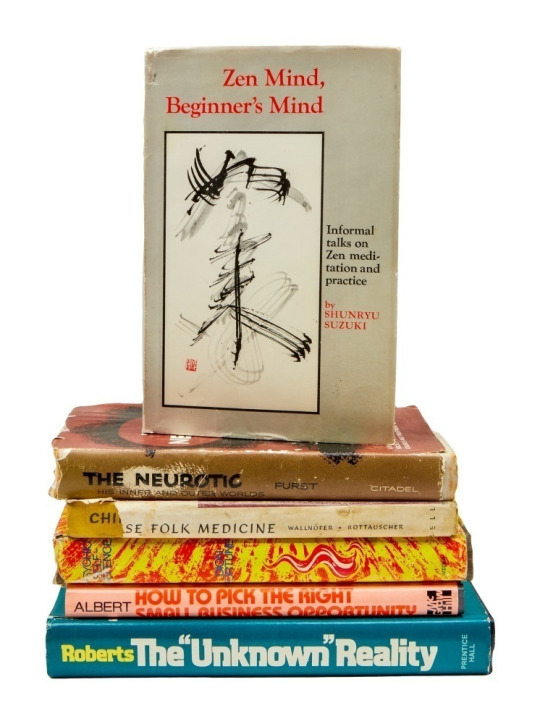
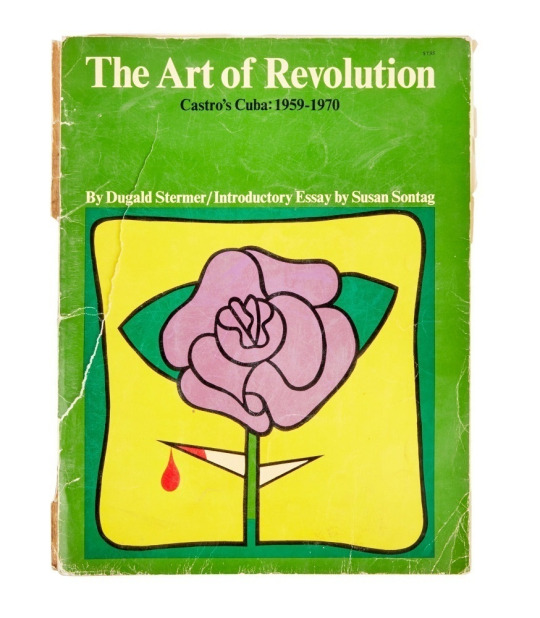
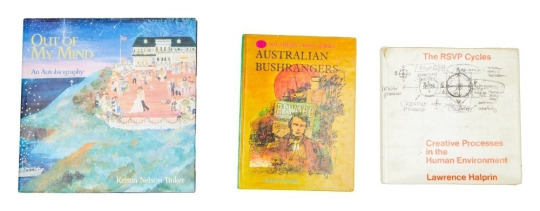
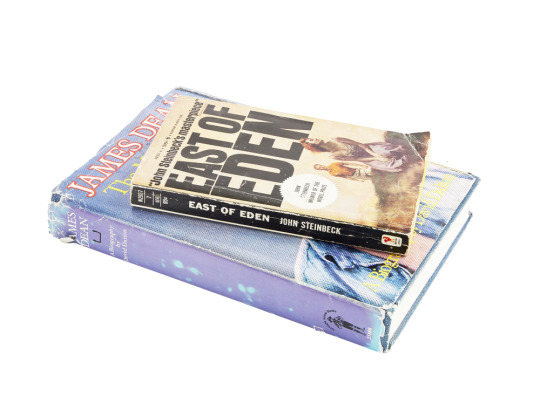


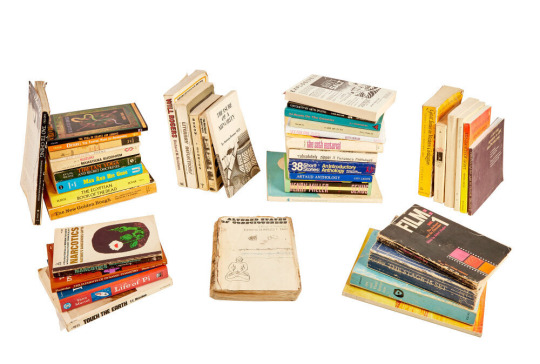
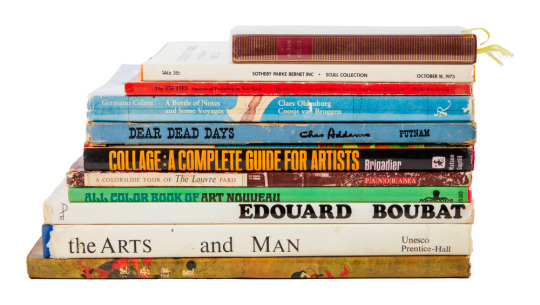

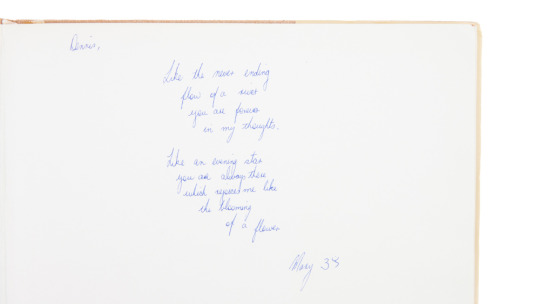
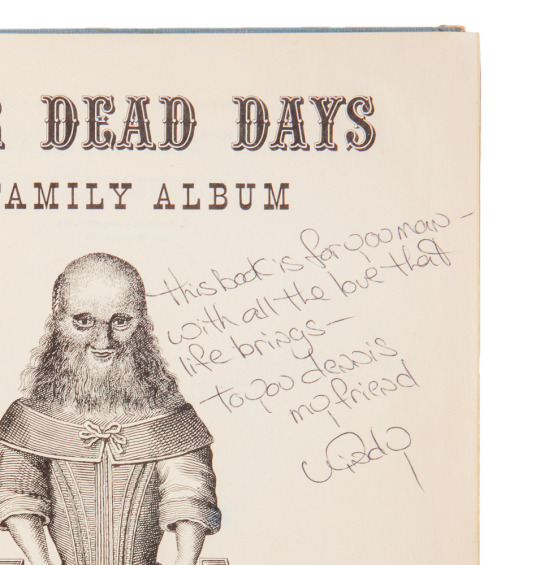
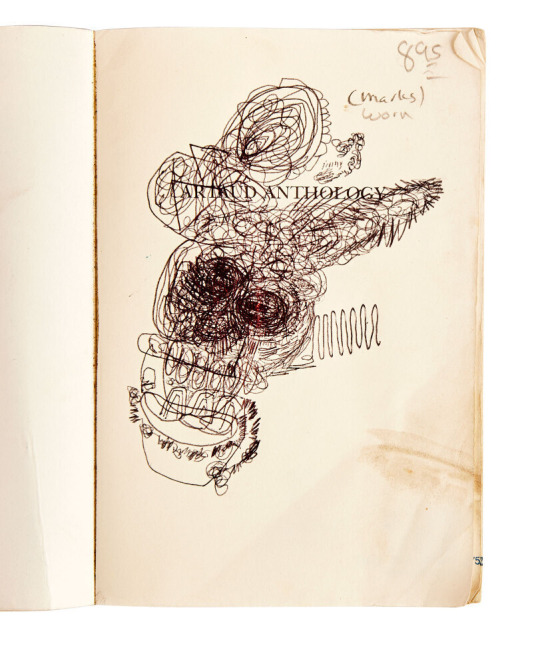
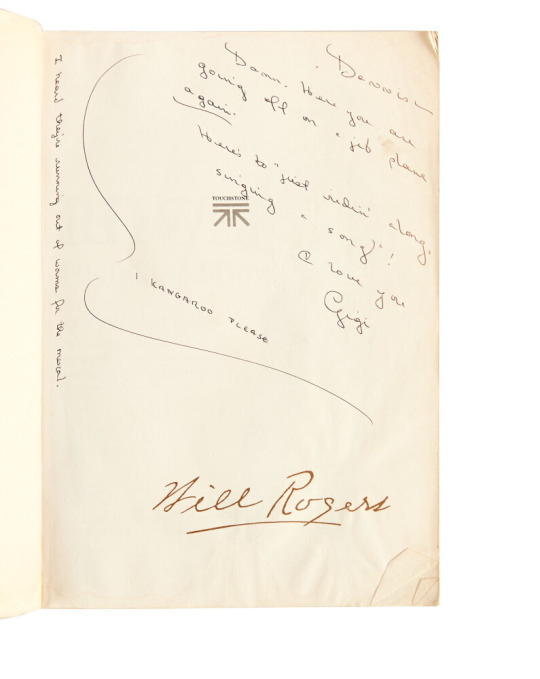
Dennis Hopper's collection of owned and gifted books
(a few are listed under the cut)
Islands in the Stream (Charles Scribner's Sons, 1970)
Magic (Delacorte Press, 1976)
Sneaky People (Simon and Schuster, 1975)
Strange Peaches (Harper's Magazine Press, 1972)
I Didn't Know I Would Live So Long (Charles Scribner's Sons, 1973)
Baby Breakdown (The Bobbs-Merrill Company, Inc., 1970)
37 (Holt, Rinehart and Winston, 1970)
Presences: A Text for Marisol (Charles Scribner's Sons, 1970)
Little Prayers for Little Lips, The Book of Tao, The Bhagavadgita or The Song Divine, and Gems and Their Occult Power.
Lolita (G.P. Putnam's Sons, 1955)
The Dramas of Kansas (John F. Higgins, 1915)
Joy of Cooking (The Bobbs-Merrill Company, 1974)
The Neurotic: His Inner and Outer Worlds (First edition, Citadel Press, 1954)
Out of My Mind: An Autobiography (Harry N. Abrams, Inc., 1997)
The Savage Mind (University of Chicago Press, 1966)
Alive: The Story of the Andes Survivors (J.B. Lippincott Company, 1974)
The Documents of 20th Century Art: Dialogues with Marcel Duchamp (Viking Press, 1971)
The Portable Dorothy Parker, A Portrait of the Artist as a Young Man, I Ching, and How to Make Love to a Man.
John Steinbeck's East of Eden (Bantam, 1962)
James Dean: The Mutant King (Straight Arrow Books, 1974) by David Dalton
The Moviegoer (The Noonday Press, 1971)
Erections, Ejaculations, Exhibitions and General Tales of Ordinary Madness (City Light Books, 1974)
Narcotics Nature's Dangerous Gifts (A Delta Book, 1973)
The Egyptian Book of the Dead (Dover Publications, 1967)
Tibetan Yoga and Secret Doctrines (Oxford University Press, 1969)
Junky (Penguin Books, 1977) by William S. Burroughs
Weed: Adventures of a Dope Smuggler (Harper & Row, 1974)
Alcoholics Anonymous (Alcoholics Anonymous World Services, 1976)
Skrebneski Portraits - A Matter of Record, Sketchbooks of Paolo Soleri, and High Tide.
Raw Notes (The Press of the Nova Scotia College of Art and Design, 2005)
Le Corbusier (Heidi Weber, 1965)
Henry Moore in America (Praeger Publishers, 1973)
Claes Oldenburg (MIT Press, 2012)
Notebooks 1959 1971 (MIT Press, 1972)
A Day in the Country (Los Angeles County Museum of Art, 1985)
Album Celine (Gallimard, 1977)
A Selection of Fifity Works From the Collection of Robert C. Scull (Sotheby Parke Bernet, Inc. 1973)
Collage A Complete Guide for Artists (Watsun-Guptill Publications, 1970)
The Fifties Aspects of Painting in New York (Smithsonian Institution Press, 1980)
A Bottle of Notes and Some Voyages (Rizzoli International Publications, 1988)
All Color Book of Art Nouveau (Octopus Books, 1974)
A Colorslide Tour of The Louvre Paris (Panorama, 1960)
Dear Dead Days (G. P. Putnam's Sons, 1959)
Woman (Aidan Ellis Publishing Limited, 1972)
The Arts and Man ( UNESCO, 1969)
Murals From the Han to the Tang (Foreign Languages Press, 1974)
A (Grove Press Inc., 1968)
Andy Warhol's Index Book (Random House, 1967)
Voices (A Big Table Book, 1969)
Another Country (A Dell Book, circa 1960s)
On The Road (Signet, circa 1980s)
57 notes
·
View notes
Text
“For many other women, to various degrees, sickness became a part of life, even a way of filling time. The sexuo-economic relation confined women to the life of the body, so it was to the body that they directed their energies and intellect. Rich women frequented resortlike health spas and the offices of elegant specialists like S. Weir Mitchell. . . . For less well-off women there were patent medicines, family doctors, and, starting in the eighteen fifties, a steady stream of popular advice books, written by doctors, on the subject of female health. It was acceptable, even stylish, to retire to bed with "sick headaches," "nerves" and various unmentionable "female troubles," and that indefinable nervous disorder "neurasthenia" was considered, in some circles, to be a mark of intellect and sensitivity. Dr. Mary Putnam Jacobi, a female regular physician, observed impatiently in 1895:
. . . it is considered natural and almost laudable to break down under all conceivable varieties of strain—a winter dissipation, a houseful of servants, a quarrel with a female friend, not to speak of more legitimate reasons. . . . Women who expect to go to bed every menstrual period expect to collapse if by chance they find themselves on their feet for a few hours during such a crisis. Constantly considering their nerves, urged to consider them by well-intentioned but short-sighted advisors, they pretty soon become nothing but a bundle of nerves.
But it sickness was a reaction, on women's part, to a difficult sitution, it was not a way out. If you have to be idle, you might as well be sick, and sickness, in turn, legitimates idleness. From the romantic perspective, the sick woman was not that far off from the ideal woman anyway. A morbid aesthetic developed, in which sickness was seen as a source of female beauty, and, beauty—in the high-fashion sense—was in fact a source of sickness. Over and over, nineteenth-century romantic paintings feature the beautiful invalid, sensuously drooping on her cushions, eyes fixed tremulously at her husband or physician, or already gazing into the Beyond. Literature aimed at female readers lingered on the romantic pathos of illness and death; popular women's magazines featured such stories as "The Grave of My Friend" and "Song of Dying." Society ladies cultivated a sickly countenance by drinking vinegar in quantity or, more effectively, arsenic. The loveliest heroines were those who died young, like Beth in Little Women, too good and too pure for life in this world.”
-Barbara Ehrenreich and Deirdre English, For Her Own Good: 150 Years of the Experts’ Advice to Women
#barbara ehrenreich#Deirdre English#female illness#female health#women’s history#female nervous disorders#history of medicine#amerika
32 notes
·
View notes
Text
In this edition of Objects of Affection, supermodel Iman takes us inside her Catskills home that is full of beautiful, artistic odes to David Bowie. From a self-portrait he painted in 1980 to a Lynn Chadwick sculpture she gave Bowie for their first wedding anniversary, watch as Iman shares some of the items most important to herself.
Director: Posy Dixon
Director of Photography: Michael Lopez
Editors: Victoria Mortati, Robby Massey
Supervising Producer: Jordin Rocchi
Manager, Creative Development Vogue: Alexandra Gurvitch
Director, Creative Development, Vogue: Anna Page Nadin
AC: Dan Lando, Alex Frischman
Gaffer: Jeremy Harris
Audio: Gabe Quiroga
Makeup Artist: Keita Moore
Hairstylist: Ursula Stephen
Featured Works:
"Man Falling Wearing A Mad-Man Mask” by Derek Boshier
“Diebenkorn” & “Self Portrait” by David Bowie
"Teddy Boy and Girl" by Lynn Chadwick
"Iman and David Bowie”
"Iman Nude"
"David Bowie and Iman" by Stephen Finer
“Midnight Ride" by Wallace Putnam
"Untitled (Pitcher)" by Kara Walker
Production Manager: Edith Pauccar, Emily Yates
Production Coordinator: Kit Fogarty
Senior Director Production Management: Jessica Schier
Post-Production Supervisor: Marco Glinbizzi
VP, Digital Video Programming and Development, Vogue (English Language): Joe Pickard Senior
Director, Digital Video: Tara Homeri
Director of Content, Vogue: Rahel Gebreyes
Still haven’t subscribed to Vogue on YouTube? ►► http://bit.ly/vogueyoutubesub
Get the best of Vogue delivered right in your inbox ►► https://bit.ly/3xAZyQg
Want to hear more from our editors? Subscribe to the magazine ►► http://bit.ly/2wXh1VW
Check out our new podcast 'In Vogue: The 1990s' ►► https://link.chtbl.com/iv-yt-description ABOUT VOGUE
Vogue is the authority on fashion news, culture trends, beauty coverage, videos, celebrity style, and fashion week updates.
13 notes
·
View notes
Text
The 2022 Bram Stoker Awards® Final Ballot

The Horror Writers Association (HWA) announced the Final Ballot for the 2022 Bram Stoker Awards®, an award they’ve been presenting in various categories since 1987 (see http://www.thebramstokerawards.com/)
Works appearing on this Ballot are Bram Stoker Award® Nominees for Superior Achievement in their Category, e.g., Novel. Congratulations to all those appearing on the Final Ballot.
THE 2022 BRAM STOKER AWARDS® FINAL BALLOT
Superior Achievement in a Novel
• Iglesias, Gabino – The Devil Takes You Home (Mullholland Press)
• Katsu, Alma – The Fervor (G.P. Putnam’s Sons)
• Kiste, Gwendolyn – Reluctant Immortals (Saga Press)
• Malerman, Josh – Daphne (Del Rey)
• Ward, Catriona – Sundial (Tor Nightfire)
Superior Achievement in a First Novel
• Adams, Erin – Jackal (Bantam Books)
• Cañas, Isabel – The Hacienda (Berkley)
• Jones, KC – Black Tide (Tor Nightfire)
• Nogle, Christi – Beulah (Cemetery Gates Media)
• Wilkes, Ally – All the White Spaces (Emily Bestler Books/Atria/Titan Books)
Superior Achievement in a Middle Grade Novel
• Dawson, Delilah S. – Camp Scare (Delacorte Press)
• Kraus, Daniel – They Stole Our Hearts (Henry Holt and Co.)
• Malinenko, Ally – This Appearing House (Katherine Tegen Books)
• Senf, Lora – The Clackity (Atheneum Books for Young Readers)
• Stringfellow, Lisa – A Comb of Wishes (Quill Tree Books)
Superior Achievement in a Graphic Novel
• Aquilone, James (editor) – Kolchak: The Night Stalker: 50th Anniversary (Moonstone Books)
• Gailey, Sarah (author) and Bak, Pius (artist) – Eat the Rich (Boom! Studios)
• Manzetti, Alessandro (author) and Cardoselli, Stefano (artist/author) – Kraken Inferno: The Last Hunt (Independent Legions Publishing)
• Tynion IV, James (author) and Dell’Edera, Werther (artist) – Something is Killing the Children, Vol. 4 (Boom! Studios)
• Young, Skottie (author) and Corona, Jorge (artist) – The Me You Love in the Dark (Image Comics)
Superior Achievement in a Young Adult Novel
• Fraistat, Ann – What We Harvest (Delacorte Press)
• Jackson, Tiffany D. – The Weight of Blood (Katherine Tegen Books)
• Marshall, Kate Alice – These Fleeting Shadows (Viking)
• Ottone, Robert P. – The Triangle (Raven Tale Publishing)
• Schwab, V.E. – Gallant (Greenwillow Books)
• Tirado, Vincent – Burn Down, Rise Up (Sourcebooks Fire)
Superior Achievement in Long Fiction
• Allred, Rebecca J. and White, Gordon B. – And in Her Smile, the World (Trepidatio Publishing)
• Carmen, Christa – “Through the Looking Glass and Straight into Hell” (Orphans of Bliss: Tales of Addiction Horror) (Wicked Run Press)
• Hightower, Laurel – Below (Ghoulish Books)
• Katsu, Alma – The Wehrwolf (Amazon Original Stories)
• Knight, EV – Three Days in the Pink Tower (Creature Publishing)
Superior Achievement in Short Fiction
• Dries, Aaron – “Nona Doesn't Dance” (Cut to Care: A Collection of Little Hurts) (IFWG Australia, IFWG International)
• Gwilym, Douglas – “Poppy’s Poppy” (Penumbric Speculative Fiction Magazine, Vol. V, No. 6)
• McCarthy, J.A.W. – “The Only Thing Different Will Be the Body” (A Woman Built by Man) (Cemetery Gates Media)
• Taborska, Anna – “A Song for Barnaby Jones” (Zagava)
• Taborska, Anna – “The Star” (Great British Horror 7: Major Arcane) (Black Shuck Books)
• Yardley, Mercedes M. – “Fracture” (Mother: Tales of Love and Terror) (Weird Little Worlds)
Superior Achievement in a Fiction Collection
• Ashe, Paula D. – We Are Here to Hurt Each Other (Nictitating Books)
• Joseph, RJ – Hell Hath No Sorrow Like a Woman Haunted (The Seventh Terrace)
• Khaw, Cassandra – Breakable Things (Undertow Publications)
• Thomas, Richard – Spontaneous Human Combustion (Keylight Books)
• Veres, Attila – The Black Maybe (Valancourt Books)
Superior Achievement in a Screenplay
• Cooper, Scott – The Pale Blue Eye (Cross Creek Pictures, Grisbi Productions, Streamline Global Group)
• Derrickson, Scott and Cargill, C. Robert – The Black Phone (Blumhouse Productions, Crooked Highway, Universal Pictures)
• Duffer Brothers, The – Stranger Things: Episode 04.01 "Chapter One: The Hellfire Club" (21 Laps Entertainment, Monkey Massacre, Netflix, Upside Down Pictures)
• Garland, Alex - Men (DNA Films)
• Goth, Mia and West, Ti – Pearl (A24, Bron Creative, Little Lamb, New Zealand Film Commission)
Superior Achievement in a Poetry Collection
• Bailey, Michael and Simon, Marge – Sifting the Ashes (Crystal Lake Publishing)
• Lynch, Donna – Girls from the County (Raw Dog Screaming Press)
• Pelayo, Cynthia – Crime Scene (Raw Dog Screaming Press)
• Saulson, Sumiko – The Rat King: A Book of Dark Poetry (Dooky Zines)
• Sng, Christina – The Gravity of Existence (Interstellar Flight Press)
Superior Achievement in an Anthology
• Datlow, Ellen – Screams from the Dark: 29 Tales of Monsters and the Monstrous (Tor Nightfire)
• Hartmann, Sadie and Saywers, Ashley – Human Monsters: A Horror Anthology (Dark Matter Ink)
• Nogle, Christi and Becker, Willow – Mother: Tales of Love and Terror (Weird Little Worlds)
• Ryan, Lindy – Into the Forest: Tales of the Baba Yaga (Black Spot Books)
• Tantlinger, Sara – Chromophobia: A Strangehouse Anthology by Women in Horror (Strangehouse Books)
Superior Achievement in Non–Fiction
• Cisco, Michael – Weird Fiction: A Genre Study (Palgrave Macmillan)
• Hieber, Leanna Renee and Janes, Andrea – A Haunted History of Invisible Women: True Stories of America's Ghosts (Citadel Press)
• Kröger, Lisa and Anderson, Melanie R. – Toil and Trouble: A Women’s History of the Occult (Quirk Books)
• Waggoner, Tim – Writing in the Dark: The Workbook (Guide Dog Books)
• Wytovich, Stephanie M. – Writing Poetry in the Dark (Raw Dog Screaming Press)
Superior Achievement in Short Non–Fiction
• Murray, Lee – “I Don’t Read Horror (& Other Weird Tales)” (Interstellar Flight Magazine) (Interstellar Flight Press)
• Pelayo, Cynthia – “This is Not a Poem” (Writing Poetry in the Dark) (Raw Dog Screaming Press)
• Wetmore, Jr., Kevin J. – “A Clown in the Living Room: The Sinister Clown on Television” (The Many Lives of Scary Clowns: Essays on Pennywise, Twisty, the Joker, Krusty and More) (McFarland and Company)
• Wood, L. Marie – “African American Horror Authors and Their Craft: The Evolution of Horror Fiction from African Folklore” (Conjuring Worlds: An Afrofuturist Textbook for Middle and High School Students) (Conjure World)
• Wood, L. Marie, “The H Word: The Horror of Hair” (Nightmare Magazine, No. 118) (Adamant Press)
#publishing news#awards news#horror writers association#bram stoker award#2022#final ballot#science fiction#nonfiction#screenplay#graphic novel#poetry#antholgy
2 notes
·
View notes
Text
After Amelia
Unsplash photo by Jeb Johnson
At Medium’s Pub Crawl this week, I met a wonderful editor and decided to submit this historical flash fiction about Amelia Earhart and her husband George Putnam. I’m glad to have found a way to revive my involvement with the platform and I’m really excited to have found the publication Morning Musings Magazine. I hope for more such opportunities. This historical…

View On WordPress
0 notes
Text

“The Kamogawa Food Detectives” by Hisashi Kashiwai (and translated by Jesse Kirkwood)
⭐️ ⭐️ ⭐️
***Thanks to NetGalley and G.P. Putnam’s Sons for the eARC copy of this book. My opinions are my own. This book came out on February 13th!***
“The Kamogawa Food Detectives” was originally published in Japan in 2013 and has just been translated into English for those of us in the United States.
Nagare Kamogawa and his daughter, Koishi, run the Kamogawa Diner, a small non-descript restaurant in Kyoto, Japan. They make delicious food, but their speciality is in their so-called food detecting skills. Customers come to them with a memory of a specific dish that they used to eat that they would like recreated. And the Kamogawas “investigate” the dish and recreate it. And the customer gets closure or an answer to a specific situation.
I liked this and didn’t like this all at the same time.
My likes are that the stories are sweet and cozy. The food sounds amazing. It’s the kind of book that you want to read curled up under a blanket on a rainy day. And also that it’s Japanese. I haven’t read a lot of Japanese authors and I am trying to diversify my reading.
My dislikes, I think, are mainly with the publishers and with how they presented this book. The book isn’t really one cohesive story. It’s six independent short stories. And they are VERY repetitive - to the point that I wanted to throw it against the wall when I started the last one and yet again, it was the same as the first five. I’m only slightly exaggerating here, but it was like a MadLibs story. It’s like there was a template and and the author just filled in the blanks with a new character and a new dish. But everything else about each story was the same - down to the description of the hallway or the exterior of the restaurant. How many times do I need to be told what the hallway looks like?
Maybe this is a translation problem. Maybe the translator made everything sound the same, I don’t know. But if this book was presented as a book of short stories, I may have enjoyed the experience better. I’ve been wondering if back when this was originally published, if the stories were published individually of each other in a monthly magazine or something and then they were collected in this volume, because that would also explain things. But the ARC that I read came with zero explanation.
Also, the way in which the stories are told is very different to way Americans tell stories. This is not a detective story in the way Americans think of a detective story. In this book, each short story is divided into two parts. In the first part, the customer comes to the restaurant and tells the duo about the dish they want recreated with some clues to its origin. The second part, the customer comes back two weeks later and the father tells the customer what he did to find the recipe and then he presents the dish. The customer gets closure. The end. We never get a middle investigative section. It’s very peculiar from a Western standpoint. I wonder and think it’s highly likely that I’m culturally missing something. Like I know that different cultures tell stories in different ways. And they have different tropes. And there are things that are intrinsic to their culture that I’m ignorant of. And that’s all completely fair and valid. Westernized culture isn’t and shouldn’t be considered the cultural standard. But I do think that IF that is the case here, then the publishers should have had an introduction to explain things.
Or have marketed this differently as a collection of short stories. Because there isn’t a lot intrinsically wrong with these stories outside of the repetition. I don’t not recommend it. It’s about 200 pages long, divided into 6 stories. You could maybe read one a night before bed. But I do think going into this book with the correct mind frame about what you’re getting into would help a lot. Because it is sweet and cozy and heartwarming and yummy.
#the kamogawa food detectives#book blog#booknerd#bookaholic#books#books and reading#booksbooksbooks#bookstagram#booksofinstagram#booktok#fiction#bookworm#Hisashi Kashiwai#Japanese#japanese fiction#translation#translated#short story
0 notes
Text
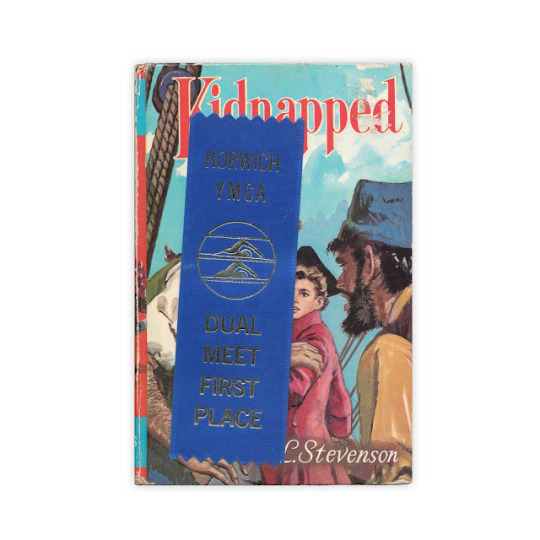
Found in "Kidnapped" by Robert Louis Stevenson. Published by The Children's Press, 1971.

Found in "The Plays of William Shakespeare" published by Bellamy and Robarts, 1791.

Elastic hairband found in "Harry Potter & the Prisoner of Azkaban" by J.K. Rowling. Published by Scholastic, 1999.

Found in "The Fifteenth Annual of Advertising Art" published by The Book Service Company, 1936

Found in "Probable Sons" by Amy LeFeuvre. Published by Revell, 1896.

Long metal spring. Found in "Most Likely to Succeed" by John Dos Passos. Published by Robert Hale, 1955.

Found in "Walks and Rambles in Dutchess and Putnam Counties" by Peggy Turco. Published by Backcountry, 1990.
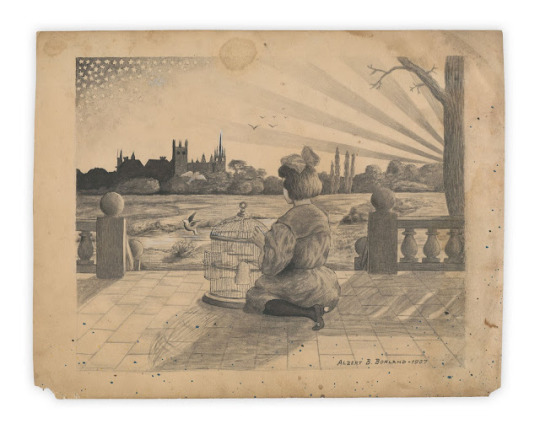

Original illustration by Albert B. Borland, dated 1907. Found in "Physical Culture Magazine" from February, 1937.
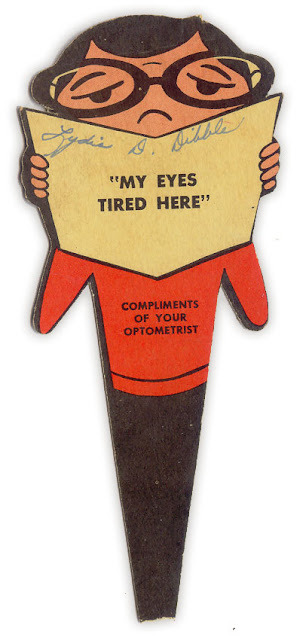

Found in "Blood and Steel" The Rise of the House of Krupp" by Bernhard Menne. Published by Lee Furman, Inc., 1938.

Found in "God Revealing His Truth Through Patriarch and Prophet" by Walter Albion Squires. Published by The Westminster Press, 1921
Forgotten Bookmarks found in books (x)
#graphic design#vintage#illustration#typography#antique#20's/30's#40's/50's#80's/90's#60's/70's#hp#harry potter
0 notes
Text
IT CAME FROM OUTER SPACE (1953) – Episode 155 – Decades Of Horror: The Classic Era
“Where are you? What do you look like? What am I supposed to be looking for? I know you are out there hiding in the desert. Maybe I’m looking right at you and don’t even see you. Come on out!” Doesn’t the song go, “Who are you? Who, who, who, who?” Join this episode’s Grue-Crew – Chad Hunt, Daphne Monary-Ernsdorff, Doc Rotten, and Jeff Mohr – as they set their eyeballs with relish on Jack Arnold’s It Came From Outer Space (1953).
Decades of Horror: The Classic Era
Episode 155 – It Came From Outer Space (1953)
Join the Crew on the Gruesome Magazine YouTube channel!
Subscribe today! And click the alert to get notified of new content!
https://youtube.com/gruesomemagazine
ANNOUNCEMENT
Decades of Horror The Classic Era is partnering with THE CLASSIC SCI-FI MOVIE CHANNEL, THE CLASSIC HORROR MOVIE CHANNEL, and WICKED HORROR TV CHANNEL
Which all now include video episodes of The Classic Era!
Available on Roku, AppleTV, Amazon FireTV, AndroidTV, Online Website.
Across All OTT platforms, as well as mobile, tablet, and desktop.
https://classicscifichannel.com/; https://classichorrorchannel.com/; https://wickedhorrortv.com/
A spaceship from another world crashes in the Arizona desert and only an amateur stargazer and a schoolteacher suspect alien influence when the local townsfolk begin to act strangely.
Director: Jack Arnold
Writers: Harry Essex; Ray Bradbury (film treatment)
Produced by: William Alland
Music by: Irving Gertz, Henry Mancini, Herman Stein (all uncredited)
Cinematography by: Clifford Stine
Editing by: Paul Weatherwax
Costume Design by: Rosemary Odell (gowns)
Makeup Department:
Joan St. Oegger (hair stylist)
Bud Westmore (makeup artist)
Jack Kevan (makeup execution) (uncredited)
Art Department: Joseph Hurley (conceptual artist) (uncredited)
Visual Effects by:
David S. Horsley (special photography)
Roswell A. Hoffmann (special photographic effects / visual effects optical printing) (uncredited)
Selected Cast:
Richard Carlson as John Putnam
Barbara Rush as Ellen Fields
Charles Drake as Sheriff Matt Warren
Joe Sawyer as Frank Daylon
Russell Johnson as George
Kathleen Hughes as Jane
Virginia Mullen as Mrs. Daylon (uncredited)
Dave Willock as Pete Davis (uncredited)
George Eldredge as Dr. Snell (uncredited)
Bradford Jackson as Bob – Dr. Snell’s Assistant (uncredited)
William Pullen as Deputy Reed (uncredited)
Robert Carson as Dugan (uncredited)
Edgar Dearing as Sam (uncredited)
Alan Dexter as Dave Loring (uncredited)
Whitey Haupt as Perry (uncredited)
Casey MacGregor as Toby (uncredited)
Dick Pinner as Lober (uncredited)
George Selk as Tom (uncredited)
Robert ‘Buzz’ Henry as Posseman (uncredited)
Kermit Maynard as Posseman (uncredited)
Ralph Brooks as Posseman (uncredited)
Ned Davenport as Man (uncredited)
Calling all “Monster Kids!” The Grue Crew tackles the sci-fi, 3-D, Jack Arnold classic, It Came From Outer Space. This one’s got it all: groovy alien eyeball monster, body-snatching shenanigans, coming-at-ya 3-D fun, and… The Professor from Gilligan’s Island. What else do you need? The Grue Crew discusses all this and much more.
At the time of this writing, It Came From Outer Space is available for streaming from the Classic Sci-Fi Movie Channel, the Classic Horror Movie Channel, and multiple PPV sources. The film is also available as a Blu-ray disc from Universal.
Gruesome Magazine’s Decades of Horror: The Classic Era records a new episode every two weeks. Up next in their very flexible schedule, as chosen by Daphne, is The City of the Dead (1960), released in the US as Horror Hotel and featuring Christopher Lee.
Please let them know how they’re doing! They want to hear from you – the coolest, grooviest fans: leave them a message or leave a comment on the Gruesome Magazine YouTube channel, the site, or email the Decades of Horror: The Classic Era podcast hosts at [email protected]
To each of you from each of them, “Thank you so much for watching and listening!”
Check out this episode!
1 note
·
View note
Photo
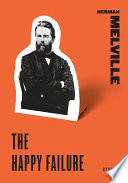
Herman Melville was an 18th century American novelist, poet, essayist and short story writer. He is best known for his works Moby Dick and Typee. During his lifetime he was considered a failure, but after his death his worth as a writer was recognized. Bartleby is a novella, which first appeared in Putnam's Magazine. The
0 notes
Text
The Three of Us by Ore Agbaje-Williams
Published: May 16, 2023G.P. Putnam’s SonsGenre: Literary FictionPages: 192KKECReads Rating: ⭐️⭐️⭐️⭐️I received a copy of this book for free, and I leave my review voluntarily.
Ore Agbaje-Williams a British-Nigerian writer and editor from North London who has written for gal—dem, Glamour UK and Wasafiri magazine. Her fiction writing has also been featured on Reflex Fiction.
Long-standing…

View On WordPress
#amazon#blog#blogger#book#book blog#book blogger#Book review#Books#g.p. putnam’s sons#husband#katy#Katy approved#katyapproved#kkec#kkecreads#literary fiction#NetGalley#New Release#ore agbaje Williams#Read#reading#reads#Review#reviewer#the three of us#wife friend
0 notes
Text
2 REMARKABLE AUTHORS DURING THE PERIOD OF SELF-DISCOVERY
MARCELO DE GRACIA CONCEPTION
M. de Gracia Concepcion was listed on the staff of the Three Stars as an editor in 1931. He was the first Filipino poet to have his collected poems published as a book in the U.S. Published in 1925 by G.P. Putnam's Sons, the book was entitled Azucena, named after a lily found in the Philippines.

JOSE GARCIA VILLA
José Garcia Villa was born in Manila in 1908. He attended the University of the Philippines, but he was suspended in 1929 after publishing a series of erotic poems, titled “Man-Songs,” in the Philippines Herald Magazine. That same year, he won a short story contest through the Philippines Free Press and used the prize money to travel to the United States, where he studied at the University of New Mexico.
Reference:
Retrieved from: https://poets.org/poet/jose-garcia-villa
Retrieved from:https://www.commonwealthcafe.info/poetry
0 notes
Text
Given the tensions and moral compromise associated with male medical care, the mid-nineteenth-century movement of women into medical training took on the aspects of a crusade—for female health, for morality, for decency.
It was this sense of being involved in a moral crusade which accounts for the determination of our early female doctors. For example, Elizabeth Blackwell applied to over sixteen schools before she found one which would accept her, but, as she said, "The idea of winning a doctor's degree gradually assumed the aspect of a great moral struggle, and the moral fight possessed attraction for me. " In the same year that Blackwell gained admission, Harriet Hunt was admitted to Harvard Medical College only to have the decision reversed because the students threatened to riot if she came. (Harvard had admitted three black male students the year before and that, according to the white male majority, was enough!) Undaunted, Hunt went to seek a medical education at an "irregular" school. Through the efforts of women like Blackwell, Hunt, Marie Zakrzewska, Lucy Sewall, Sarah Adamson, Ann Preston, Helen Morton, and Mary Putnam Jacobi—to mention only a few—there were, by 1900, approximately five thousand trained women doctors in the land, fifteen hundred female medical students and seven medical schools exclusively for women.
Male doctors recognized that women in the profession posed a threat which was far out of proportion to their numbers. The woman patient who considered herself socially superior to female lay healers, yet was repelled by male medicine, would naturally welcome a woman professional. Faced with this threat to their practice, the male doctors responded with every argument they could think of: How could a lady who was too refined for male medical care travel at night to a medical emergency? Operate when indisposed (e.g., menstruating)? If women were too modest for mixed-sex medical care, how could they expect to survive the realities of medical training—the vulgar revelations of anatomy class, the shocking truths about human reproduction, and so on?*
*Nor is this perception of the incompatibility of women and medicine dead among American gynecologists today. One who was recently interviewed in the January 1977 Ms. magazine explained, "You have to be kind of crazy to go into the field, because it's a difficult, physically demanding residency. I had to be extremely obsessive-compulsive to get through it. This kind of behavior doesn't look good on a woman. And I'm so attuned to ob/gyn as a male speciality that I find it hard to accept women in it. I just don't see them as very feminine. I only know a couple of them who are feminine and good doctors too."
-Barbara Ehrenreich and Deirdre English, For Her Own Good: 150 Years of the Experts’ Advice to Women
#barbara ehrenreich#Deirdre English#womens history#history of medicine#women in medicine#male entitlement
14 notes
·
View notes
Text
2023 INFI Awards

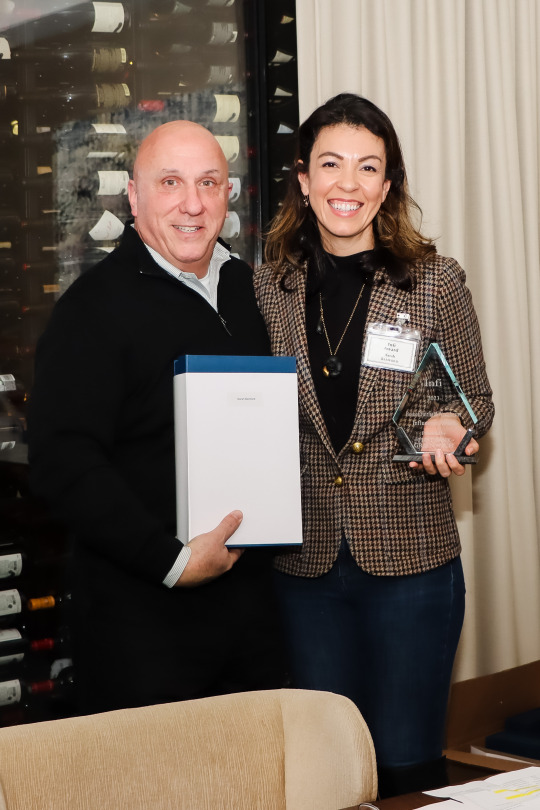
The First Bank of Greenwich hosted its first Influencer Awards (INFI Awards) event on Tuesday, February 28th at The J House. Identifying problems and coming up with creative solutions is what the Bank’s President and CEO, Frank Gaudio, does best.
After recognizing the need for the Bank to build a better online presence, Gaudio decided to reach out to the leading Influencers in the area for assistance. From Port Chester to Stamford, and everywhere in between, 25 of the most well-known were invited and recognized by the Bank as a “Best Influencer” in their respective areas. The Bank will feature these individuals and organizations throughout the year in various collaborations and community events.
The First Bank of Greenwich is a True Community Bank committed to delivering first rate customer service. Remaining involved with the community and its major players is a topmost priority. The Bank was named “Best Community Bank” by The Greenwich Sentinel in recognition of their investment in the community and reputation for putting people first.
The First Bank of Greenwich provides the products and services of a national bank with the addition of real bankers offering personalized attention and steadfast loyalty to their customers. The First Bank of Greenwich believes a strong bank helps maintain a strong community. Visit First Bank of Greenwich online (greenwichfirst.com) or at one of 3 branches in Fairfield and Westchester County to learn more about how First Bank of Greenwich can help you.
Click here to view photos of the event by Marilin Cardona, Stamford Branch Assistant Manager at The First Bank of Greenwich.
The 2023 Award Recipient List:
Party with Moms, LLC; Tamar Lurie Group/Coldwell Banker; Val's Putnam Wines & Liquors; Greenwich Lifestyle Magazine; It's All In The Details, LLC; Davis Management; Greenwich Point Marketing; Hybrid Media; Carrie Brudner PR; Westfair Productions; Greenwich Chamber of Commerce; The First Bank of Greenwich; Hey Stamford!; The Greenwich Sentinel; Synergy1 Holdings; Tony's at The J House; Stamford Chamber of Commerce; The Stamford Partnership; Westchester Magazine; Port Chester Rye Brook Chamber of Commerce; Greenwich/Rye Neighbor; Today Media; Greenwich Girl; Tiger Lily Events; Moffly Media; Greenwich Moms; Marcia Selden Catering
0 notes
Text
Book Review: The Jaunt by Stephen King
Book Review: The Jaunt by Stephen King
#ReaderCommunity #ReadingCommunity #ReadersCommunity #Reader #Reading #Scifi #Horror #The Jaunt #StephenKing #Books
Hi everyone! I hope you’re all well! It’s Friday, and time for another review. Today I’m reviewing one of my favourite short stories by one of my favourite writers: The Jaunt by Stephen King.
The Jaunt by Stephen King was first published in Twilight Zone Magazine in 1981 and is included in the short story collection Skeleton Crew published in 1985 by Putnam. It runs 25 pages.
PlotThe Jaunt…

View On WordPress
0 notes
Text

Certified as an aviator only two decades after the Wright brothers' first flight, Earhart used her fame to promote air travel and equal opportunities for women. Photograph By Sarah Leen, National Geographic Image Collection
Why Does Amelia Earhart Still Fascinate Us? The Missing Aviator Embraced The Modern World—In Technology, Women's Rights, and Celebrity Culture.
— By Rachel Hartigan | October 17, 2019
Alex Mandel first encountered Amelia Earhart on a summer afternoon while reading his father’s old magazines in the backyard of his childhood home in Odessa, Ukraine. “It was just a brief biography of her and a story of how she disappeared,” he said. That was enough.
For more than 30 years, Mandel has described himself as “an admirer of Amelia Earhart.” He met a fellow admirer and soulmate through what he calls the “Amelia community.” With her, he made a pilgrimage to all the important sites in Earhart’s life. These days he plans vacations around the Amelia Earhart Festival in Atchison, Kansas—where aficionados gather to savor all things Earhart in the town where she was born and locals come to enjoy the airshow and fireworks.
During the event last July, the mustached Ukrainian in suspenders could be found sharing his considerable knowledge with visitors to Earhart’s birthplace museum. When asked why the aviator has held his attention for so long, his answer is simple: “She was an inspiration.”

Fireworks explode during the Amelia Earhart Festival in Atchison, Kansas, while spectators watch from the lawn in front of Earhart's childhood home. Photograph By Gabriel Scarlett’s, National Geographic
Although the distance that Mandel has traveled to feed his fandom is unusual, his fascination with Earhart is not. The aviator has managed to hold our collective attention for nearly a century—from 1928 when she was the first woman to fly across the Atlantic as a passenger (a death-defying feat at the time) through last August when Robert Ballard led a high-tech search for her lost plane.
Yet Earhart wasn’t the only daredevil female pilot breaking records during the early days of aviation. Ruth Nichols flew faster. Louise Thaden flew higher. Why is Earhart the one who still captures our imagination?
In some ways, she was groomed for it. That first flight across the Atlantic—on a plane dubbed the Friendship—was funded by Amy Phipps Guest, a wealthy woman whose family begged her not to make the flight herself. Instead, Guest hired publisher George Putnam to find a suitable female passenger. “There were other female pilots at the time, probably some that were better pilots than Amelia,” says Cynthia Putnam, George’s granddaughter. “But she fit the bill. She looked the part.” (George Putnam and Amelia Earhart married in 1931.)
Tall, lanky, and Midwestern, Earhart resembled Charles Lindbergh, the first aviator to fly solo across the Atlantic. “She is photographed before that first flight with lighting and from an angle that was very self-consciously stylized to resemble the way Charles Lindbergh had been photographed,” says Tracey Jean Boisseau, a historian at Purdue University. “They developed the name Lady Lindy, which she did not appreciate.”
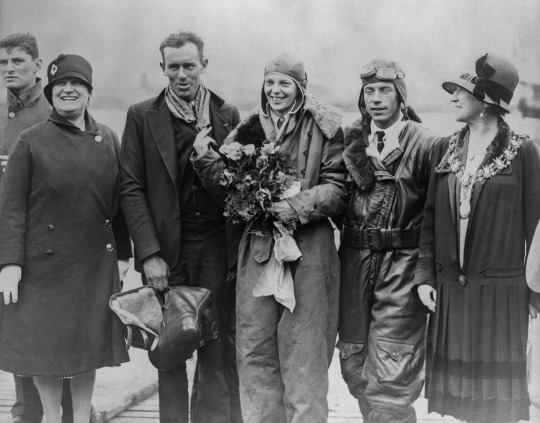
When the Friendship landed in the United Kingdom in 1928, Amelia Earhart (center) captured the public's attention, although she'd only been a passenger on the trans-Atlantic flight. From left to right: Amy Guest sponsored the journey, Lou Gordon was the plane's mechanic, Wilmer Stultz piloted the plane, and Mrs. Foster Welch was the mayor of Southampton. Photograph By Bettmann, Getty Imagines
When the Friendship landed in London, the plane’s pilot and navigator were ignored by the crowds. Although Earhart had been merely a passenger or, as she put it, “a sack of potatoes,” she received all the accolades. She capitalized on the experience by writing a book and going on to become a public face for the new field of aviation.
But Earhart was determined to earn her adulation and prove—to men and women—that women could accomplish what men could. The more aviation feats performed by women, she wrote, “the more forcefully it is demonstrated that they can and do fly.” Four years after the flight of the Friendship, she flew solo across the Atlantic, becoming only the second person to do so.
Earhart landed near Derry, Northern Ireland, where her arrival left a mark that was felt beyond aviation, according to the city’s Amelia Earhart Legacy Association. “Women didn’t drive then, but Amelia arrived in a plane,” explained Nicole McElhinney, a group member who spoke at last summer’s Amelia Earhart Festival. “Women didn’t wear trousers, yet she was wearing a flying suit.” (Indeed, the farmers who first encountered her thought she was a boy.) Instead, at a time when women’s suffrage was still new, she demonstrated what women could do.

In 1932, Amelia Earhart made a solo flight across the Atlantic, becoming only the second person to do so after Charles Lindbergh. She landed in a field near the city of Derry in Northern Ireland. Photograph By Sueddeutsche Zeitung Photo, Alamy
“She wanted equal marriages and she wanted equal opportunity in all occupations and she wanted equal pay for equal work,” says Amy Kleppner, who accepted an award at the festival on behalf of her mother Muriel, Earhart’s younger sister.
That may be why she seems so modern. She was a pioneer—in the fight for women’s equality, in the world-changing development of aviation, and in crafting a public image during a new era of celebrity culture. And she did it all with an aw-shucks modesty that suggested that anyone could accomplish what she did, as long as they were doing it for “the fun of it.”
“She embodied many good values for people in general and Americans in particular,” says Mandel.
But perhaps the reason Amelia Earhart is still with us as an icon is that she vanished without a trace just short of a historic achievement. “She doesn’t die of old age, she doesn’t die of disease, she doesn’t die in front of our eyes even in an explosion,” says Boisseau. “She dies in the way most conducive to legend building—out of sight and somewhat mysteriously.”
On July 2, 1937, Earhart and navigator Fred Noonan disappeared while attempting to become the first aviators to circumnavigate the globe at the equator. They were aiming for Howland Island, a speck in the Pacific, and couldn’t find it. They only had two more legs of their record-breaking journey to go.
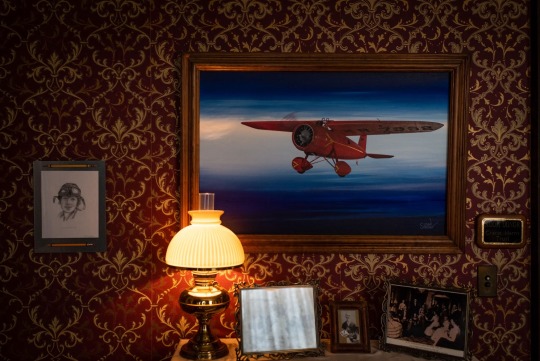
A painting of the plane that Amelia Earhart called the "little red bus"—the Lockheed Vega 5B that carried her across the Atlantic—is displayed at the aviator's birthplace museum in Atchison, Kansas. Photograph By Gabriel Scarlett, National Geographic
Generations have puzzled over what really happened to her. Did she crash the plane and sink to the bottom of the ocean? Did she land on a deserted island and die a castaway? Was she captured by the Japanese? They’ve searched underwater and on deserted islands, in colonial archives and the New Jersey suburbs, and even in the basement of her childhood home for clues to the fate of the missing aviator—so far without any definitive answers.
“The mystery is part of why, anytime you talk about important women, she’s always in the conversation,” says Jacque Pregont, who coordinates the festival in Atchison. “I hope they never find her.”
0 notes